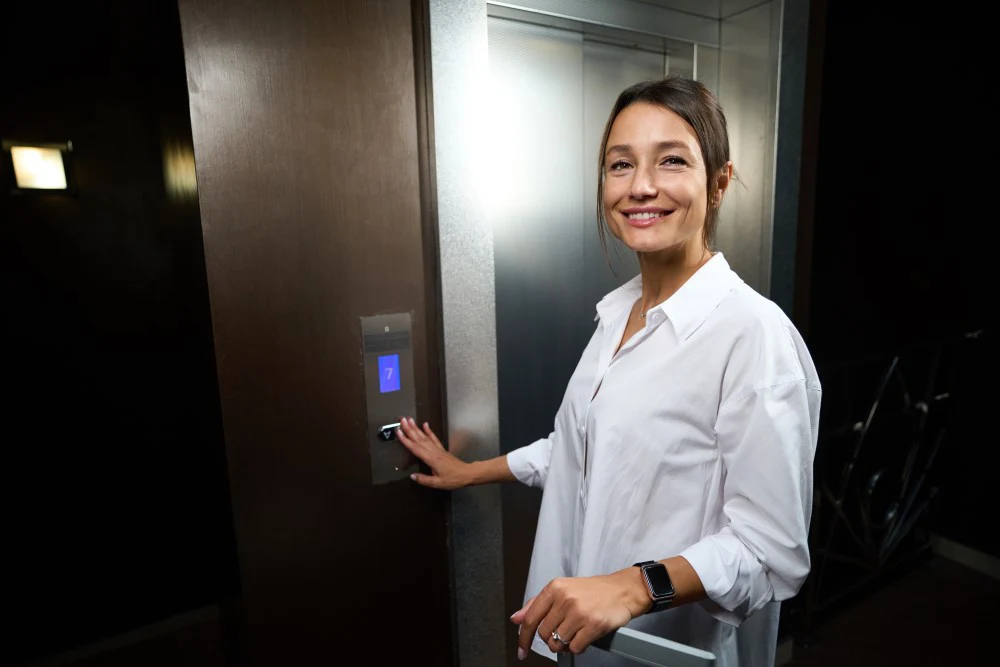The elevator, also known as a lift, is an indispensable part of modern daily life. Whether in residential buildings, office complexes, hospitals, or shopping centers, elevators facilitate the transportation of people and goods across multiple floors and have become an essential element of urban infrastructure. The development of elevators, their technical aspects, and their significance in everyday life are fascinating topics that will be explored in detail below.

The History of the Elevator
The idea of the elevator is not new. Simple lifting devices powered by humans or animals existed in ancient Rome to transport goods or people. During the 19th century industrial revolution, the development of the steam engine made the construction of modern elevators possible. A breakthrough in elevator technology came in 1853 when American engineer Elisha Otis invented a safety brake that prevented the cabin from falling if the rope broke. This innovation laid the foundation for the safe operation of elevators in skyscrapers.
With the invention of the electric elevator in 1880 by Werner von Siemens, elevators became viable for use in increasingly taller buildings. Over the following decades, elevators were continuously improved, significantly contributing to the growth of modern cities by enabling the construction of skyscrapers. Today, millions of elevators around the world perform billions of rides daily.
Technical Aspects of an Elevator
Modern elevators consist of several essential components that work together to ensure safe and efficient operation. The key parts of an elevator include the cabin, elevator shafts, counterweights, suspension means (usually steel cables or belts), the drive motor, and the control system.
The cabin is the part of the elevator where people or goods are transported. It moves up and down within a vertical shaft. The counterweight helps balance the weight of the cabin, reducing the energy required to operate the elevator. Modern elevators use either hydraulic or traction systems to move the cabin.
Hydraulic elevators operate with a piston moved by hydraulic pressure to raise and lower the cabin. This type of elevator is commonly used in buildings with few floors as they are slower and less efficient than traction elevators. Traction elevators, on the other hand, use steel ropes running over a drive sheave to move the cabin. This type of elevator is prevalent in high-rise buildings due to its speed and efficiency.
The control of a modern elevator is managed by a complex computer system that monitors the cabin's movements, optimizes energy consumption, and ensures passenger safety. Safety features such as emergency brakes, intercom systems, and door sensors are critical to the secure operation of an elevator.
The Importance of Elevators in Modern Life
Elevators play a central role in the daily lives of millions of people. They not only facilitate access to different floors but also contribute to accessibility by allowing people with limited mobility to reach higher levels. In many urban settings, skyscrapers would be impractical or even impossible without elevators. Elevators thus significantly contribute to the efficient use of space in densely populated areas.
Moreover, elevators are crucial in industries. Freight elevators are used in warehouses and factories to transport heavy goods, greatly enhancing workflow efficiency. In hospitals, specialized elevators are essential for transporting patients and medical equipment.
The ecological aspect of elevators is also becoming increasingly important. Modern elevator systems are designed to be energy-efficient. Regenerative drives, which recover energy during braking and feed it back into the power grid, are an example of how modern elevator technology helps reduce energy consumption.
Future Prospects
Elevator technology is continuously evolving to meet the demands of the modern world. New systems are being developed to make transportation in skyscrapers even faster, safer, and more energy-efficient. One of the most intriguing developments is the use of magnetic levitation technology, which allows elevators to move not only vertically but also horizontally. Such systems could revolutionize building construction in the coming years.
Another promising trend is the integration of elevators into smart building technologies. In the future, elevators could work even more efficiently with the help of Artificial Intelligence (AI) and the Internet of Things (IoT) by analyzing and optimizing traffic within a building.
Conclusion
The elevator is an integral part of modern life. Its development has not only revolutionized architecture but also eased the daily lives of millions of people worldwide. With advancing technology, elevators will become even more efficient, safer, and sustainable in the coming years, further increasing their importance in the urban landscape.

